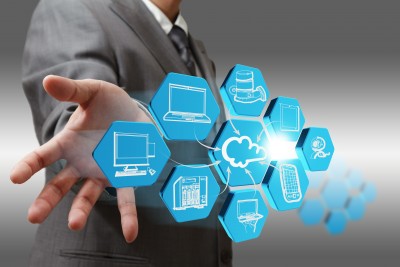Disaster Recovery has become an important part of Business Continuity to keep continuing with the business activities despite any interruptions – natural or human induced. With the unavoidable dependence on computers, IT and electronic technology have become indispensable parts of disaster recovery. The continuing change in technology undoubtedly adds options for disaster recovery. From backing up data on tapes and disks (either on-site or off-site) to replicating data and systems off-site there has been continuous evolution of technology. Knowing about the latest technologies and trends would keep businesses technology smart and enhance the efficiency of the organization.
One of the recent trending disaster recovery technologies is Cloud Computing, which creates a backup of all the data with the vendor’s server over a network. All one needs is a computer with the required software and an internet connection to restore the data in case of requirement. This technology enables automatic backup and speedy retrieval while being cost effective and flexible in storage and recovery. It comes with the drawback of network dependence and privacy concerns. But the popularity has been on the rise since its advent.
Virtualization
The second popular technology for disaster recovery is Virtualization, which creates a virtual version of the servers and desktops required by businesses. It speeds up disaster recovery; both while implementing and while restoring. Their easier portability makes the virtual servers and desktops easily reboot on new or different hardware. Their complexity is their drawback but nevertheless a reliable option of disaster recovery.
Mobile technologies
Mobile devices are increasing in popularity with smart features built in them. In case of inaccessibility to office computers or laptops, mobile devices like smart phones, tablets, and macs, keep the connectivity continuing and coordinate disaster recovery plans. This certainly comes with additional data centre infrastructure and thus additional planning and protection measure. With improved sophisticated technology adding to the functions of mobile devices they are potential backup options for disaster recovery. Better be safe with additional plans than sorry.
Social Networking
Business continuity and disaster recovery is not just about backup and timely recovery of data and important information. It is also about continuing contact with customers, partners and more importantly colleagues. Social networking sites have made it possible to maintain continuing contacts in case of disrupted official servers and network. They have been used in the past have great potential to be a reliable channel of communication. The only requirement is connectivity to the internet and the disaster recovery can be performed.
Hard drives, discs, and tapes though sound obsolete are still being used to avoid leakage of sensitive information over the internet. Being connected over the internet has potential risks of being a victim of cyber attacks, but taking adequate measures will minimize the risk of losing information to unsafe hands.
The above mentioned are the popular technologies of disaster recoveries. With the improvement in technology there are many more to be introduced that will compete with the existing ones.
Eva Birleson is an internet entrpreneur, blogger and advocate of paperless business systems. Her years of doing business online has taught her the importance of IT disaster recovery planning and how costly it would be for a company not to have a disaster recovery plan.
